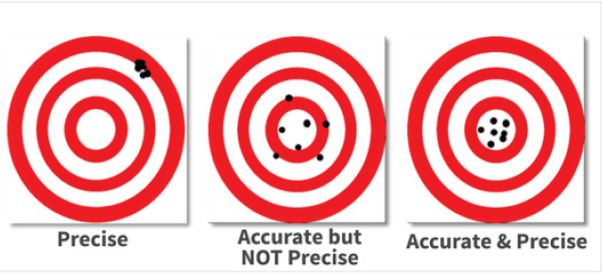by David R. Rice, DDS
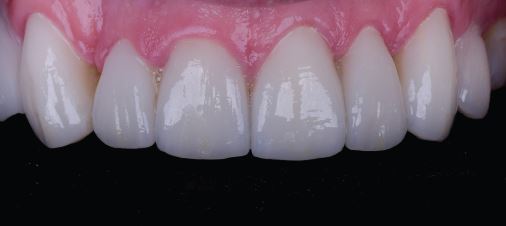 There are few, if any, areas of dentistry that offer a practice as much opportunity to affect case acceptance as digital smile design. This truly amazing technology enables us to use scanners, software, and apps to upload and diagnose data and plan both big and small cases.
There are few, if any, areas of dentistry that offer a practice as much opportunity to affect case acceptance as digital smile design. This truly amazing technology enables us to use scanners, software, and apps to upload and diagnose data and plan both big and small cases.
We can take smile measurements that are translatable and accurate and quickly bring them first to 3D models and then to next-level restorative care, orthodontic care, removeable care, implantology care and more. And we can use 3D printing to manufacture many of those appliances within the four walls of our practices.
The range of things we can do digitally is vast, including scanning and milling with full or partial coverage all-ceramics; printing temporary materials, like crown and bridge material, and denture bases; and scanning and electronically sending veneers, crowns, sleep appliances, clear aligners, occlusal guards and implants to our labs. And we’ll soon be able to print definitive coverage restorations (i.e., crowns and onlays).
These capabilities and more make it possible for you to: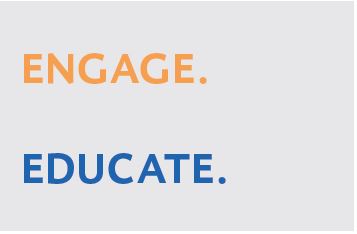
- Engage your patients. Digital smile design will WOW your patients – Trust me!
- Educate your patients. They’ll understand the nature of their clinical condition and the rationale for your recommendation.
- Empower your patients. Digital interactivity makes it easier for patients to ask questions and decide what outcomes they want.
When a practice is on its “A+ game” with digital smile design, it’s because its support team is fully engaged and doing much of the actual scanning and 3D printing, while the dentists are more focused on vision, systems, processes, and strategy. Everybody wins: the practice, the team, and the patient.
While I highly recommend digital smile design for every practice, it’s important that each practice moves to whatever destination and at whatever speed feels right to them. Some will want to get there fast and take a jet plane, while others will want to take their time by driving and taking the scenic route. And that’s exactly the way it should be.
Building excitement… and profitability
Digital smile design is unquestionably an amazing way to do better dentistry and fun dentistry that will excite your team and your patients. But it’s much more than that: It’s also a powerful way to build both your patient base and your profits. If you use the right systems, you’ll get patients to “Yes!” faster and make them want to direct their friends and family to your practice as well. And if you use streamlined processes made possible by this technology – such as spending less time manufacturing appliances and having more patient visits take place virtually – you’ll increase your profit margins as well.
Out-of-network practices focused on doing great dentistry will need to focus on streamlining their processes to make sure they’re also doing profitable dentistry. And given the way reimbursements are trending, PPO practices – especially those headed by younger dentists – can certainly not afford to miss any opportunity to maximize profits by streamlining their operations.
What would Amazon do?
It’s instructive to think about how your patients – and perhaps you – buy products on Amazon to understand how you can better meet their needs. On Amazon.com, customers have become accustomed to using Amazon’s cutting-edge technology to buy what they want, when they want it, and how they want it. It’s a completely customer-focused experience.
Ask yourself: What delivers a better patient experience: A mouthful of impression material, or a digital scan? More in-office appointments to get the job done, or fewer?
This doesn’t mean you shouldn’t ever do conventional impressions or take more than one appointment to complete a treatment. It just means that digital dentistry lets us give our patients what they want, when they want it, and how they want it more easily than we could
with analog dentistry only. Our ability to take everything we’ve ever done in the analog space, in the physical world, and bring it to the virtual – or digital – world is here, and almost everything is possible today. And what isn’t 100 percent possible today will be possible within
the next few years.
Bridging the gap
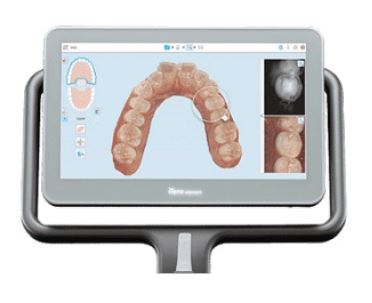
Most practices that have an intraoral scanner typically scan quickly with the goal of getting to a diagnostic work-up as quickly as possible.
They treat the scan like they treat a physical impression: They want the data, and they have a modality to get what’s in the patient’s mouth
recorded so they can either diagnose or take a closer look at a problem they’re trying to solve as soon as possible. But they also have – and are
probably missing out on – a huge opportunity to bridge an invisible gap between the scan and the diagnostic work-up.
What if those practices took a few minutes following the scan to show it to the patient? Based on the experience in our practice, they’d send
their case acceptance through the roof!
By engaging, educating and empowering their patients, they’d help their patients “level up” so they’re both excited and knowledgeable about the big picture. This will empower them to not only seek complete care from the practice, but to do the proper home care beyond merely brushing their teeth.
One way you can further empower patients after showing them a scan or an intraoral camera image is by not just by answering any questions they might ask, but by noticing when their facial expression indicates that something is troubling them. Simply say, “I can see from your expression that something is concerning you. Can you tell me what you’re thinking right now?” Most of us miss this opportunity. And if you do nothing more than regularly ask these questions, I’m convinced you’ll increase your production by at least 10 percent. That’s the power of digital smile design to let us level-up our game.
Keep in mind that a scan isn’t just a static image; it’s a dynamic, 3-dimensional virtual process we can show, rotate, open, close and manipulate. It lets us bring our patient along on the journey with us. When you hear their questions – or see questions on their faces – is when you need to get them involved in the process.
When we use our scan to engage, educate and empower the patient, we suddenly have – as younger dentists will appreciate – what everyone is looking for on Instagram: influence. This allows us to build value, as our patients will begin asking us for dentistry. And because they’ve
asked for it, they’ll actually pay for it – and without complaining!
Influence is all about what we do with our digital data from our scans. This is where it gets fun – and the best part is, everyone can do it their own way.
The questions you need to ask yourself are: Where am I? Where do I want to go? And at what pace do I want to learn? And when you answer those questions and start making your plans, it’s essential to make smart choices about the processes you use and the equipment you invest in.
Picking the right processes
As dentists, we all want the process to be as easy as possible for ourselves, and as simple, intuitive and seamless as possible for our team. As you get started in digital smile design, you’ll have a choice of two basic processes:
- Take the data from the scan and send it straight to your favorite lab.
- Take the data and work with it within the four walls of your practice.
The first option requires only the purchase of an intraoral scanner. The second also requires a more advanced system – such as DMG’s 3Demax printer and remarkable new DentaMile connect system – to make it easy to work both with the lab and within the practice.
Several years ago, our practice decided that the second option was right for us. Soon thereafter, we decided something else: that everyone on our team – dental assistants, hygienists, dentists, and anyone else who touches the technology – must be able to scan, design and print appliances. And the DMG system made it easy to make that happen.

We also had to make choices regarding the nature of our patient visits. And the question we asked ourselves was this: Without compromising patient care, how can we maximize the patient experience?
One approach is to handle a typical restorative case with two in-person appointments. Another is to have the first appointment – presumably the one when you do the scan – be in-person but have the second appointment be handled by a virtual column. For example, the second
appointment could involve a virtual consultation in which the patient looks at the scans with you online from their home or office. How many times has a patient asked, “Do I really have to come in for that?” With digital smile design, the answer can often be “No.” One practice I recently visited is running multiple virtual columns per day, and in fact one assistant’s sole function is to run virtual columns. She then passes the virtual baton to the dentist. They schedule virtual appointments just like in-office appointments, and they use the virtual appointments for esthetically driven consults, clear aligner consults and more. They also use them to greatly streamline their day regarding the clear aligner process.
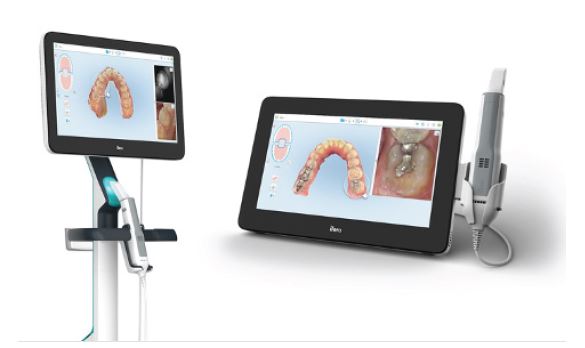
Now consider a third approach: same-day treatment. For example, if you have an Itero scanner or something comparable, you can scan and show the patient what their Invisalign-straightened teeth will look like within two minutes. Talk about case acceptance! And if you have an amazingly easy-to-use system like DMG’s 3Demax printer and its DentaMile connect software, you can design and 3D-print that appliance that day and get started on that big case while the patient is still in the building.
Selecting the right systems
As you embark on your pursuit of the many benefits of digital smile design, there are several ways you can go about investing in some combination of scanning, milling and/or 3D printing equipment for your practice. Whichever way you choose, I highly recommend you take a system-based approach. The data– which comes from W. Edwards Deming, the late total quality management guru – shows that 94 percent of our success is system-based. That’s not to say that the 6 percent that’s human-based isn’t important. If you’ve read my past articles or heard me speak before, you know that I’m a big proponent of investing heavily in the humans in our practice. Our team matters greatly. But the fact remains that 94 percent of our success is system-based. Keep that in mind when you’re deciding which systems to bring into your practice.
When you decide to buy an intraoral scanner – whether or not you also decide to buy a milling machine – I highly recommend that you also buy a 3D printer. As much as I love my scanner, my 3D printer is the investment I recouped faster than any other, and by a long shot. In fact, when you buy a 3D printer, you’ll probably get your money back in one-to-three months.

And when you buy a 3D printer, make sure you’re buying from a company that has its people and money invested in the research and development behind it, and that you’re highly confident the company will be around for more than just a few years. There’s a reason why we have DMG’s 3Demax in our practice and why I’ve talked about it in this article and in webinars I’ve given. I’d also advise you to buy not just a 3D printer, but a 3D printing system. You can experience great synergy – and eliminate frustrations – when you purchase a system comprising a 3D printer, washing unit and curing unit from the same manufacturer. DMG offers the 3Dewash washing unit and 3Decure curing unit to complement its 3Demax printer. All three units take up remarkably little space in the practice. To take our synergy a step further, we’ve recently added DMG’s new DentaMile connect cloud-based design software to complete the system.
Scanner tips
Our practice has benefited greatly from our insistence on total team integration. Every member of our team – including every dentist, every hygienist, and every dental assistant – is required to scan on a regular basis to build and maintain proficiency.
I also recommend that you scan every patient, including every new patient, every restorative patient and every hygiene patient. Keep in mind that your patients will greatly prefer the speed and comfort of a scan over a time-consuming mouthful of impression material. And they’ll tell their friends and family members about what a wonderful experience scanning provides.
Here are just some of the benefits you’ll enjoy when you regularly use an intraoral scanner:
- It lets you maintain your patient focus, so your team can concentrate on caring for your patient instead of pouring models.
- It shrinks your team’s to-do list, which will do wonders for your team’s happiness and productivity.
- It shrinks your costs quickly and is very inexpensive to integrate into your practice.
- It becomes your teammate, and – while I’m sure you love and appreciate your human teammates as much as I do mine – you’ll also love the fact that your scanner will never get sick, get to work late, or ask for a raise. And when you consider that most economic pundits predict that labor supply issues aren’t going away any time soon, a scanner becomes an even more attractive teammate.
3D printer tips
Here are four important tips to get the most out of your 3D printer:
- Appoint a dedicated team member to be the go-to person. In our practice, we have several dedicated team members, and we rotate the responsibility on a week-to-week or day-to-day basis. This also ensures back-up coverage in case the assigned person is out sick.
- When it comes to any bigger cases – like diagnostic casts – that require a model, I highly recommend batch-printing of the models at lunchtime or at the end of the workday. Think of the time that will save you, and how your team members won’t have to leave
you chairside to produce a model. - The occasions when you should not batch print are the times when you want to produce and profit – times when you want to keep butts in seats. There will be plenty of days when you’ll want to scan, design, and print a mouth guard or an aligner while the patient is in the building.
- I recommend focusing on mastering the designing and batch-printing of diagnostic models first. Once your team has that down, you can start adding other types of cases.
As with intraoral scanners, not all 3D printers are created equal. Here are four questions to ask the manufacturer when shopping for a 3D printer:
- Is it part of a system that also includes a washing unit and a curing unit?
- Does it have its own design software?
- Is it validated? (Surprisingly, not all are.)
- Is it both precise and accurate? (As you can see in the graphic below, it’s not enough to be only one or the other.)
The reason we opted for DMG’s system is that it checked all four of the boxes above.
Getting to “Yes!”
The best way of getting to “Yes!” with your patients is to take advantage of the interactive aspects of digital smile design. Showing a patient an image that’s magnified 30 times or more on a computer screen provides a powerful opportunity to let the patient see it, touch it, rotate it, and experience it with you. Six months after you’ve noticed a situation on a radiograph that requires monitoring, iTero’s NIRI technology allows you to take a scan and easily assess its progress while engaging, educating, and empowering the patient.
The opportunities for fruitful interaction are almost endless. Some scanners can help you – and your patient – assess if recession, abfraction or occlusal wear is growing. In about two minutes, iTero’s Element 5D intraoral scanner lets you show a patient what their teeth look like now and what they’ll look like after treatment. You can also show a patient how the appearance of their teeth today compares to what they’ll look like following straightening.

A big key to getting to “Yes!” is learning what matters most to your patient. For example, here’s how you might persuade four different celebrities to get to “Yes!” for the same digital technology based on what we know about them:
- Michael Jordan is a hard driver who’s all about results. He’ll love digital technology because it gets him from A to Z faster than analog.
- Lady Gaga is a “trendy” and a group person who’ll love digital technology because it’s cool and fun.
- Garth Brooks likes stability and will love digital technology because it’s predictable.
- Mayim Bialik is an analytical person who will understand and love the accuracy and precision that digital technology brings to the table.
Creating virtual treatment columns can greatly complement your case acceptance. The instant you have the patient’s digital records in your system, you can start engaging, educating, and empowering them in the moment. And by stressing how convenient it will be for them, you’ll
be able to build a virtual treatment column and follow up with them virtually when they’re at home or work. You’ll even be able to get them to initiate communications with you and send you images.
How many times have you had a patient defer a decision because they wanted to get their significant other’s opinion? With virtual columns, you can gather all the images and schedule a virtual call with both the patient and the significant other, whether they’re together at home or
one’s at home and the other’s at work. Think about how powerful it can be when you’re able to treat your patients – Amazon-like – the way they like to be treated!
Concluding thoughts
You might be wondering if you should wait to get into the digital smile design game in hopes that prices might be coming down. I certainly don’t have a crystal ball, but with the inflation predictions I’ve been seeing, it doesn’t seem likely that prices will be coming down meaningfully in the foreseeable future.
When we decided the time was right for our practice, we did our homework, we jumped into the game, and we grew with the technology. It’s one of the smartest things we’ve ever done, and I couldn’t recommend that approach more highly.
